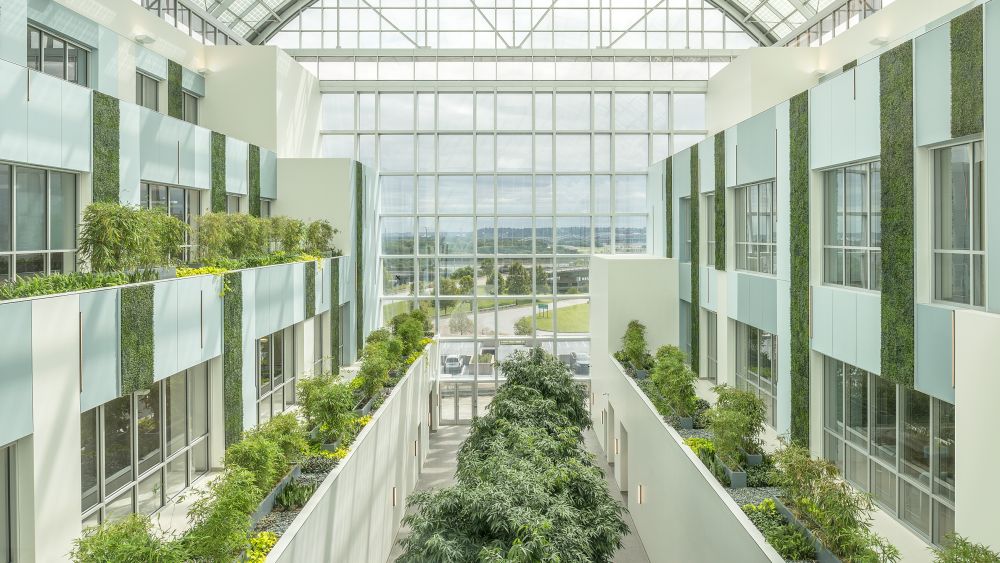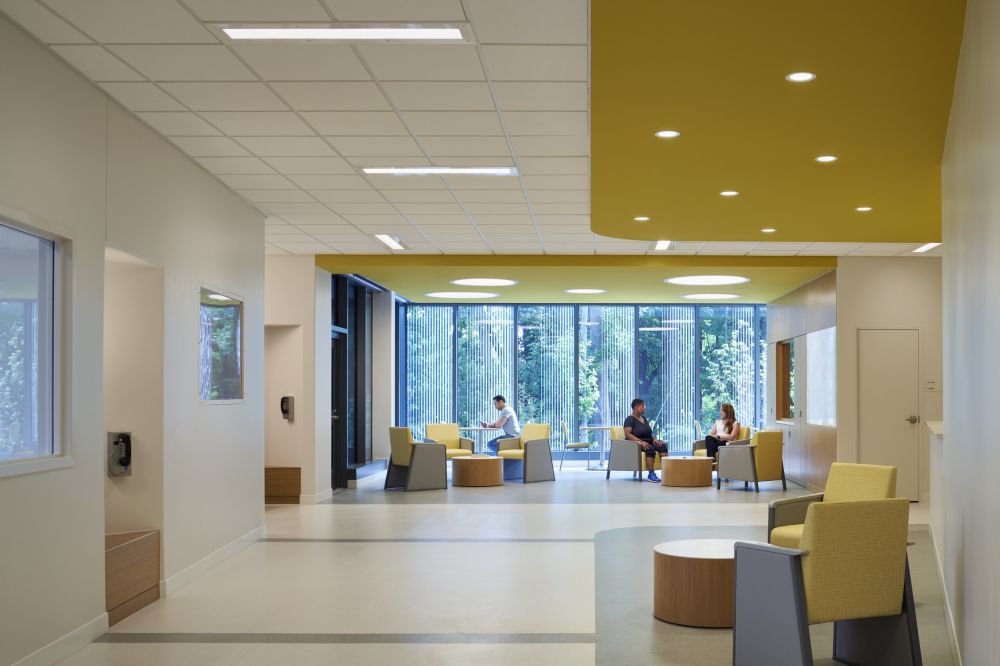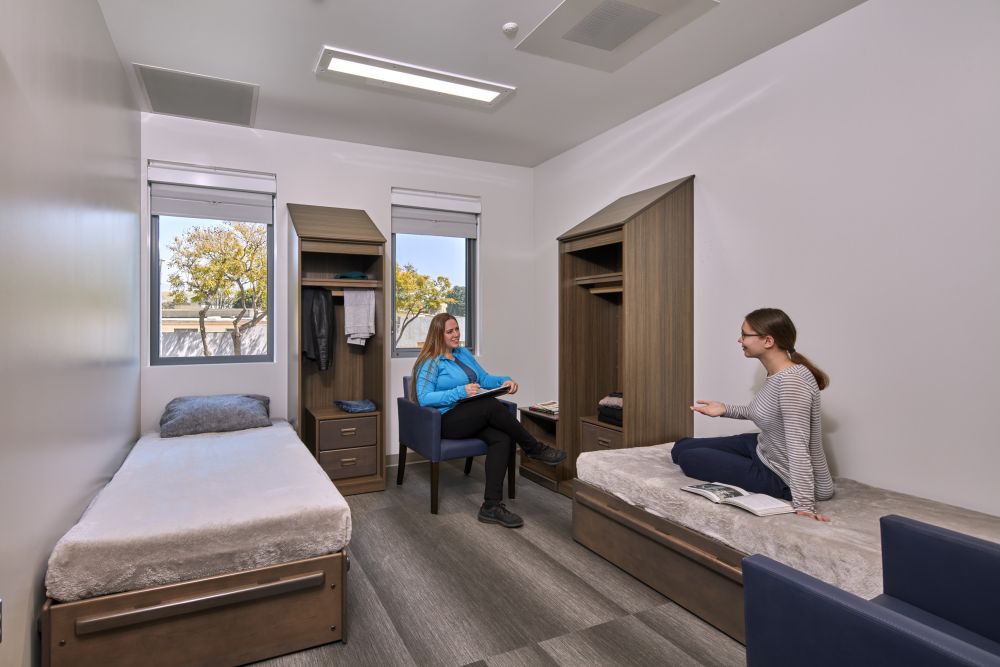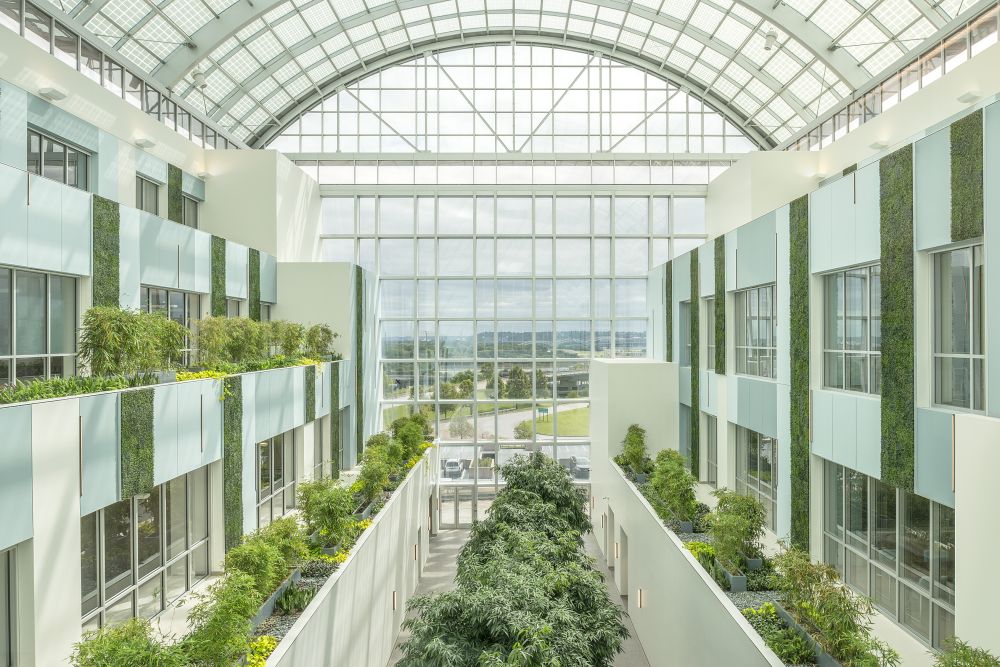Neo.Life features CannonDesign's vision to reimagine mental health facilities
September 5, 2022
Social Sharing
Neo.Life published an in-depth article highlighting the important role neuroaesthetics play in the design of mental health facilities for the future.
In the article, several CannonDesign leaders are quoted, and the University of Kansas Health Strawberry Hill Behavioral Health Hospital is featured as a project that manifests the notion of creating a space for patients to flourish. Here's a few excerpts:
On how experience drives design.
CannonDesign’s approach is part of a growing trend in mental health architecture: designing spaces based on neuroaesthetics to improve mental processes.
“We design every mental health project with a focus on the human experience,” said Abbie Clary, our health practice director. “We believe creating a beautiful building is the baseline, and then [we] work to layer in considerations related to care and staff and patient well-being.”
On designing for safety and inclusion.
When it comes to future mental health facilities, safety is another key feature discussed in the article and the thought of considering human behavior when designing a space. Our Alison Leonard was interviewed on the topic:
“Finding furniture, designing solutions and creating spaces that ensure patient dignity and humanity at the same time as safety can be hard, but it’s critical and necessary and pushes us to be more creative,” said Alison Leonard, a senior healthcare programmer with Blue Cottage of CannonDesign.
On infusing mental health design ideas across society.
Meanwhile, our Denver health practice leader, Stacey Root, envisions a future where more and more spaces are intentionally built to support well-being in general, as well as a range of specific mental health outcomes. She even envisions designs crafted for prevention and mitigation of mental illness.
“We’re still mostly designing spaces for people who have already experienced a crisis. We need to invest more in deploying mental health spaces and design strategies to intervene before a crisis occurs or escalates,” Root said.
Some examples she cites include creating spaces in schools that reduce stigma and soothe the mind for stressed-out children, and even rooms conducive to providing ongoing support for students struggling with mental health. Outside of schools, she envisions allocating dedicated therapeutic areas in pharmacies, retail stores or supermarkets. She also says we could rethink public transit design to be more calming.
“A mental health design lens can be overlaid on any and all spaces. We should always be considering access to nature, improved wayfinding, reducing sensory overload and stimulation, infusing soothing colors and more,” said Root. “The more we can design spaces with these attributes and the more we proactively create environments where users have control, the more accommodating our built environment will be to those dealing with mental health challenges.”




